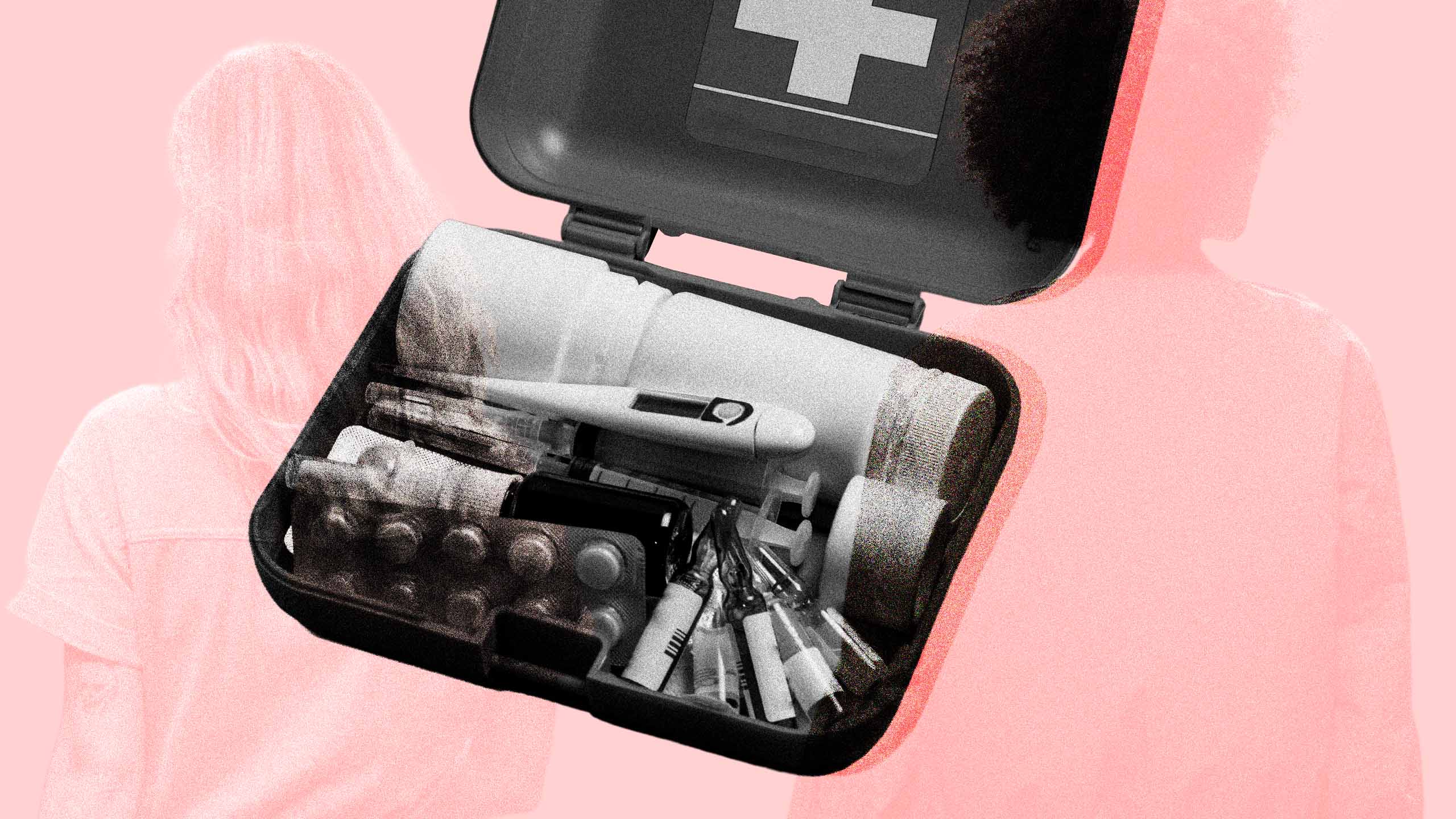With climbing global temperatures increasing the risk of weather-related disasters fivefold in the last fifty years, it’s safe to say that climate change is affecting everyone. However, not everyone is experiencing the effects of climate change equally. When it comes to climate-provoked emergencies—and social disasters such as the COVID-19 pandemic— queer folks often feel the effects differently than their cisgender and heterosexual counterparts.
“There are certain vulnerability factors that exist for some Two-Spirit, lesbian, gay, bisexual, trans, queer and intersex people in disaster and emergency contexts,” says Marcilyn Cianfarani, a queer disabled disaster and emergency management specialist and retired paramedic with over 20 years of experience in various emergency management fields.
Cianfarani explains that discrimination based on non-traditional gender presentations and/or non-traditional family structures, can place certain queer and trans people and households at risk during disasters. Other factors that may mean queer folks feel particular fallout after an emergency include dependence on mainstream emergency services, such as police, and isolation from community.
“When adding intersecting identities—race, disability, class, age—to the mix, some queer people can end up in very precarious situations,” Cianfarani adds.
While natural disasters like tornadoes, wildfires and tsunamis don’t discriminate, the systems, policies, practices and organizations responsible for disaster response do, says Cianfarani. So why are queer people more at risk during emergency situations, and how can those systems better prepare for supporting vulnerable populations through disaster situations?
Before disaster strikes
Though marginalized groups are at greater risk in the aftermath of disasters and emergencies, there are conditions that exist before disaster strikes that make queer and trans folks particularly vulnerable to their effects.
Dr. Billy Tusker Haworth, a research fellow in the School of Geosciences at the University of Sydney, Australia, gives an example from their research, which found that U.K. governments did not adequately prepare to support queer people at the start of the COVID-19 pandemic.
“It was already known in the U.K. that LGBTQ+ people (especially trans people) experienced higher rates of mental health challenges and difficulty in accessing healthcare—indicating causes that predate the pandemic. Yet these issues were not adequately planned for in official crisis responses,” they say.
Haworth says there needs to be more big-picture research into how LGBTQ+ populations can be supported with the ongoing effects of issues like climate change, as opposed to isolated disaster situations.
“We know that climate change is associated with increased frequency and intensity of some rapid-onset disasters like cyclones and storms, but the protracted, longer-term and slower-onset pressures and stresses of living under changing climates for marginalized groups, including LGBTQ+ people, are less understood, but stand to be increasingly significant into the future,” they say.
This ultimately exacerbates inequalities between individuals and across communities, affecting some parts of the world more than others, Haworth says. Supporting queer people by addressing the underlying causes of what makes them more vulnerable to disasters is crucial for long-term emergency management.
“While emergency response will remain important, increased attention needs to be on disaster risk reduction and addressing the underlying causes of unequal disaster impacts for LGBTQ+ people and other marginalized populations,” Haworth says.
Why are queer people at higher risk during disasters?
Queer people are often also at a higher risk of experiencing more extreme effects from a disaster due to social determinants of health. LGBTQ2S+ people often face poorer income, education, employment and housing prospects compared to their heterosexual and cisgender counterparts, with racialized queer people experiencing further social and psychological discrimination than white queer people.
“During a disaster, a queer houseless person won’t have the level of safety and protection and access to resources that a housed heterosexual person will. A Black queer unhoused person is most likely going to face additional barriers because many systems are not designed to be inclusive,” Cianfarani says.
The Canadian government recommends that people should “be prepared to take care of yourself and your family for a minimum of 72 hours” at all times in case of a disaster— something Cianfarani points out isn’t as simple as the government makes it seem.
“What does this look like for a queer unhoused person? Emergency management organizations need to ensure that the right people are at their planning tables,” she says.
It’s crucial that those emergency management organizations also ensure that the people at the planning tables are representative of the queer communities that need serving, which Hawarth said must include a diversity of demographics and experiences within the LGBTQ+ populations. They say it’s important to remember that even LGBTQ+ populations can represent some people more than others, and can minimize or exclude certain voices.
“The experiences and needs of LGBTQ+ people who are bisexual, have intersex variations, are not able-bodied or are of particular faith groups or ethnicities, as examples, have historically been less visible than those of able-bodied cisgender white gay men, for instance,” they say.
What happens after a disaster?
In the immediate wake of a disaster, queer people are particularly vulnerable. Many emergency situations can result in temporary living environments that can be hostile for queer populations. For instance, in some shelters, individuals may be forced to “re-closet” themselves, in order to protect themselves from being singled out or harassed, an often traumatic process for queer people.
Shelters are also typically established with male and female amenities only, such as in how bathroom and sleeping areas are arranged, which means individuals presenting outside of normative gender binary categories either cannot access shelter services, or face discrimination when they do, says Haworth. This discrimination can come from other affected people in the shelter, as well as from shelter workers.
Haworth gives the example of the 2011 earthquake disaster in Japan, where a trans man wearing a chest binder was sheltering in an emergency temporary shelter. A paper in Gender, Place & Culture details his experience.
“He was afraid to change his clothes in the shelter without privacy because other people might discover his gender identity,” Haworth explains. “After several days, his chest binder was dirty and beginning to smell, so he went back to his partly destroyed house to change clothes, increasing his risk of harm in the dangerous, earthquake impacted areas.”
Queer folks are harmed when immediate emergency response decisions are made that prioritize cis heterosexual people first and foremost. For instance, in Colombia and Panama, a gender-based approach was taken to combat COVID-19, which saw men permitted to leave the house on odd-numbered days, and women allowed out on even-numbered days.
That led to a rise in discrimination against trans and non-binary individuals in those countries. In Bogota, a trans woman was stabbed by a man who said she was out on the wrong day, and community network Red Comunitaria Trans said they recorded at least 20 violent incidents against trans people during the period.
Prioritizing the needs of queer folks in disaster situations, in contrast, can help people at their most vulnerable. Cianfarani highlights a case in Indonesia following the eruption of Mount Merapi in 2010. Gender-diverse members of the community, known as warias, provided hair and makeup services to people in evacuation centres, and while the group was regularly subject to discrimination from the community at large, more than 2,000 evacuees benefited from the warias’ free hair and makeup services while sheltering.
“These types of grassroots initiatives should be acknowledged in disaster risk reduction and emergency management policies and practices, but sadly they are often overlooked,” Cianfarani says.
Looking ahead
As instances of natural disasters and social emergencies continue to rise, it’s more important than ever that disaster agencies and organizations factor the needs of queer folks into their preparedness plans.
Haworth said an important step forward is for organizations that work with disaster-affected people to undertake LGBTQ+ awareness training, and for that training to be mandatory for all staff, as opposed to just a select few interested in the topic.
“Until LGBTQ+ inclusion is embedded within disaster risk reduction policy and planning right from the beginning, it can too easily remain an ‘optional extra’ or ‘add-on’ for disaster management and organizations, meaning exclusion persists,” they say.
Cianfarani has developed a list of recommendations for emergency management and responder organizations and relief agencies, after working with LGBTQ2S+ people and households in Toronto. These recommendations include ensuring public spaces and mainstream aid and response organizations are visibly welcoming for queer folks (e.g., through the use of rainbow stickers), establishing funding support for the timely recovery of queer services following a disaster and incorporating the needs of non-traditional families as they pertain to emergency sheltering and housing situations.
Finding support
There are limited disaster response organizations that specifically centre queer people in their operations, however; organizations such as Rainbow Railroad, which provide support for LGBTQ+ individuals fleeing at-risk situations, can help those displaced by events like disasters.
Mutual aid organizations such as This Way Up also support queer folks in need, and pre-existing queer community networks are often vital to LGBTQ2S+ survival in emergencies.
“The one thing we tend to overlook when thinking about marginalized populations and disaster studies is the capacity that marginalized communities have to prepare and respond to disasters and crises,” Cianfarani says.


 Why you can trust Xtra
Why you can trust Xtra


